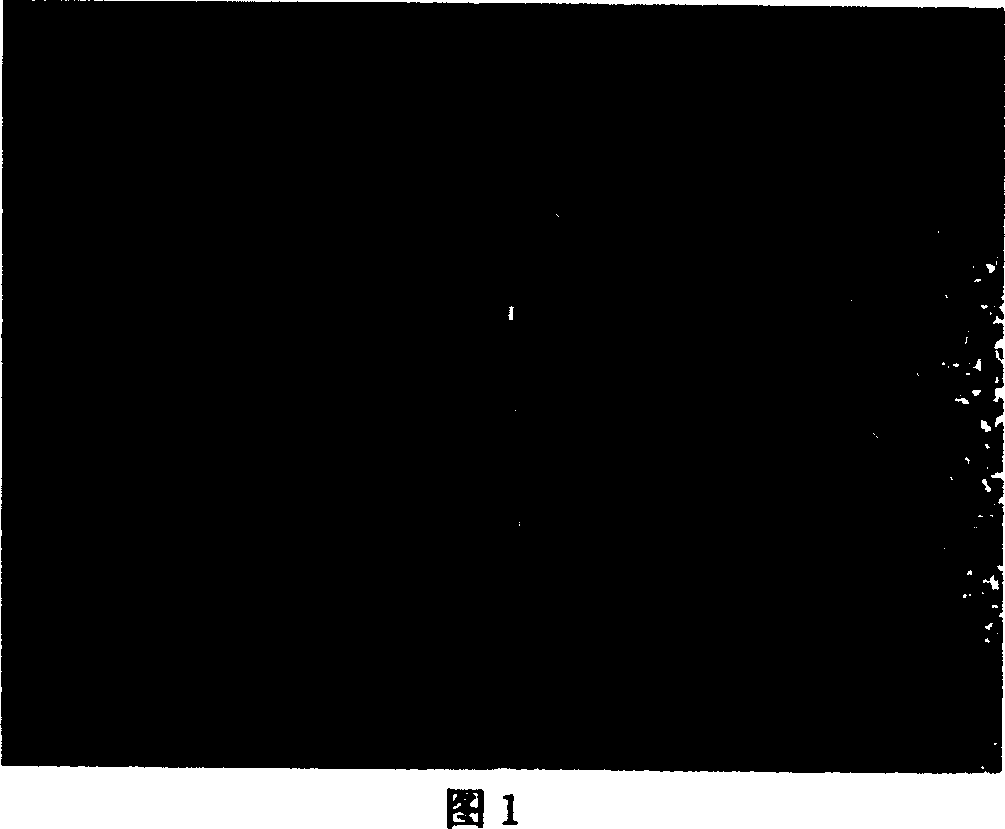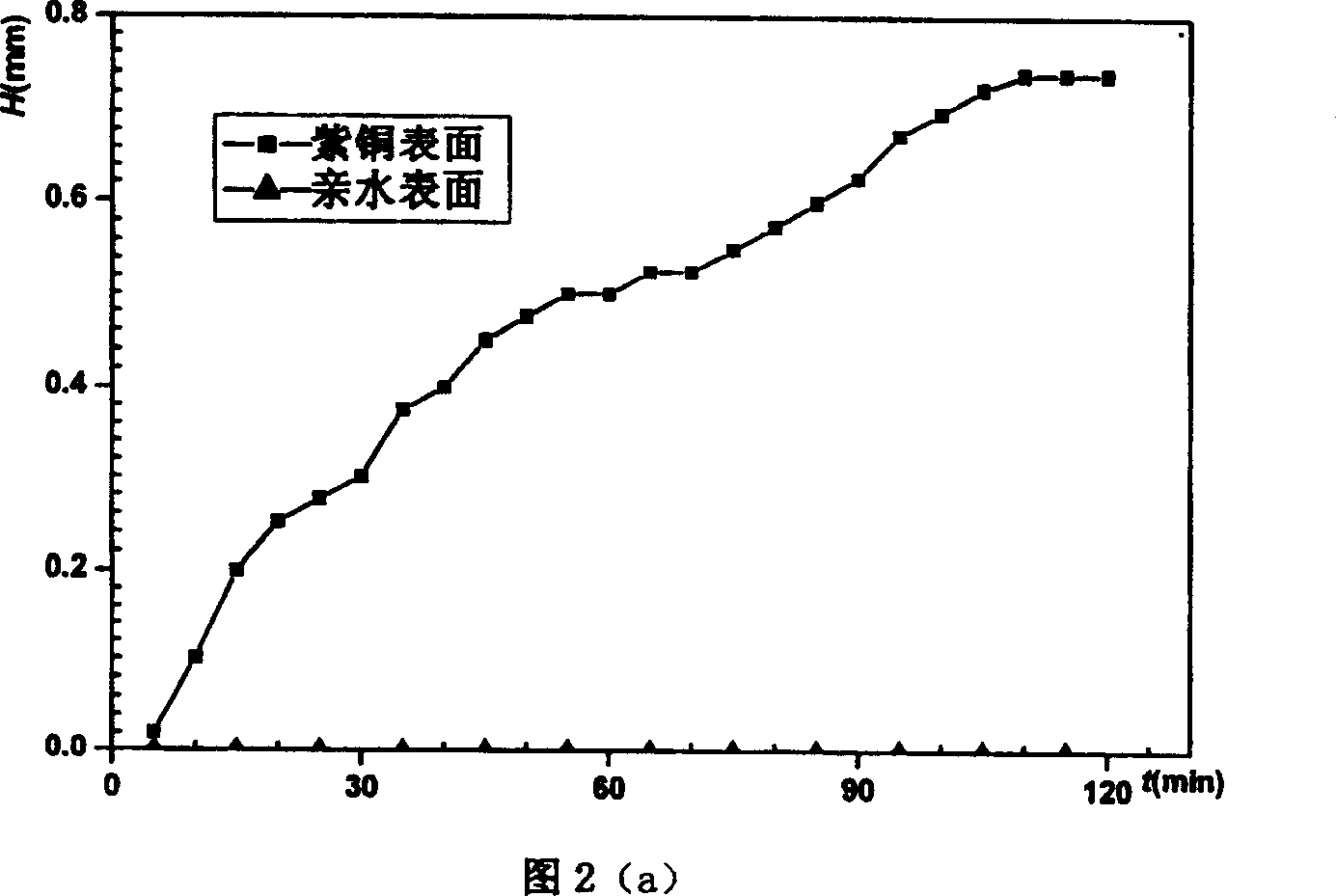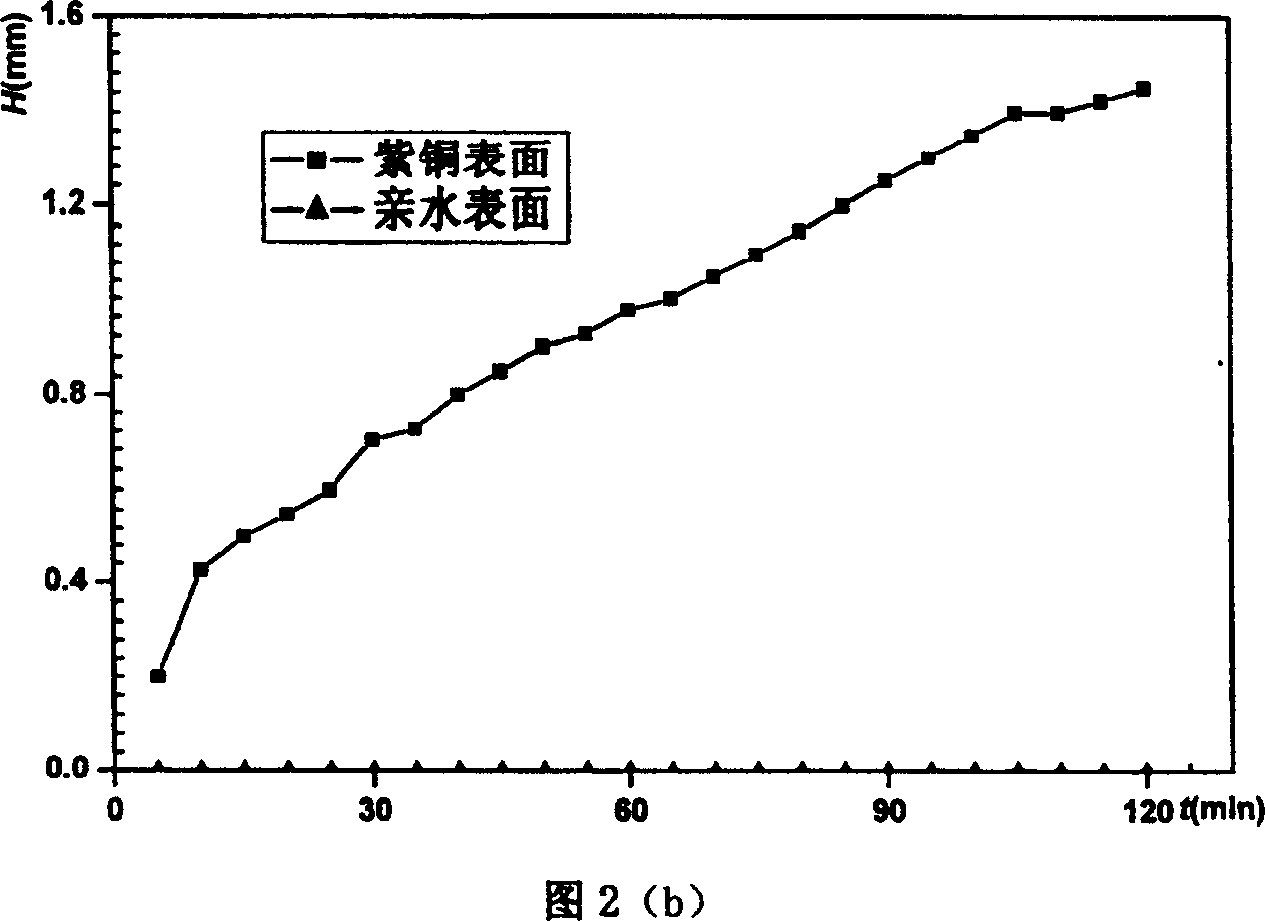Hydrophilic antifrosting coating
A hydrophilic and coating technology, applied in refrigeration and low temperature fields, can solve the problems of non-reusable use, poor anti-frost effect, poor adhesion between glycerol solution and wall surface, etc., to delay the formation of initial frost crystals and prevent volatilization Effect
- Summary
- Abstract
- Description
- Claims
- Application Information
AI Technical Summary
Problems solved by technology
Method used
Image
Examples
Embodiment 1
[0019] The production steps of anti-frost coating are as follows:
[0020] 1. Production of super absorbent resin:
[0021] The composition of superabsorbent resin is as follows according to mass ratio: Acrylic acid 49, Acrylamide 10, Water 160, Potassium hydroxide 20, Sodium hydroxide 5, Hydroxypropyl methacrylate 7, N, N'-methylenebisacrylamide 0.002, Initiator (ammonium persulfate) 0.04, sodium bisulfite 0.05.
[0022] According to the above formula, add water, potassium hydroxide and sodium hydroxide to the reactor with reflux condenser and dropping funnel nitrogen conduit, and add acrylic acid and N, N'-methylenebispropene under the condition of nitrogen gas Amide, while stirring, add hydroxypropyl methacrylate, keeping the temperature at 40°C. Add acrylamide, add ammonium persulfate initiator and sodium bisulfite in 4 times. It was heated to 60°C and left to stand for 6 hours to carry out a polymerization reaction. After the polymerization reaction, the mixture chang...
Embodiment 2
[0034] The components of the superabsorbent resin are shown in Table 1, and the manufacturing process is the same as in Example 1. Weigh 30 grams of superabsorbent resin, 60 grams of epoxy resin varnish, and 45 grams of glycerol, mix them thoroughly, and use a brush to apply part of the mixture to the left surface of the copper plate with a thickness of 6mm, and measure the coating thickness is 0.8mm. Actual tests show that no obvious frost crystals are found on the cold wall surface after 10 hours of actual operation in the range where the temperature of the cold wall surface is not lower than -10°C and the relative humidity of the air does not exceed 50%. Accompanying drawing 1 is the photograph that refrigeration 6 hours is taken in an experiment that adopts this anti-frost coating. This embodiment illustrates that the invented coating can be used for anti-frost treatment of air-conditioning outdoor units in cold winter in the north.
Embodiment 3,4
[0036] Listed respectively in embodiment 3,4, the component of anti-frost coating in table 1, wherein superabsorbent resin and anti-frost coating production process and testing equipment are the same as embodiment 1, and embodiment is listed simultaneously in table 1 1, 2 components and the test effect of 5 embodiments,.
[0037] In the test, it is measured that in the case of low air humidity (-10°C), the initial frost crystal appearance time can be delayed for at least 3 hours, and the amount of frost formation can be reduced by at least 3 hours. More than 55%. In the experiment, the longest measurement time is 10 hours, and the "average frosting delay time" and "average frosting amount reduction" in Table 1 are under the condition of air humidity-10℃ average value.
[0038] Example 1
PUM
 Login to View More
Login to View More Abstract
Description
Claims
Application Information
 Login to View More
Login to View More - R&D
- Intellectual Property
- Life Sciences
- Materials
- Tech Scout
- Unparalleled Data Quality
- Higher Quality Content
- 60% Fewer Hallucinations
Browse by: Latest US Patents, China's latest patents, Technical Efficacy Thesaurus, Application Domain, Technology Topic, Popular Technical Reports.
© 2025 PatSnap. All rights reserved.Legal|Privacy policy|Modern Slavery Act Transparency Statement|Sitemap|About US| Contact US: help@patsnap.com



